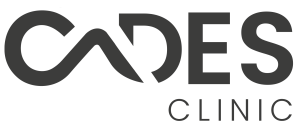Breast Operations Aftercare
Breast Lift Aftercare
After a breast lift procedure, it is important to follow your surgeon’s instructions for post-operative care to ensure the best possible recovery.
WHAT TO DO
Important Instructions
Wear a support bra
Your surgeon may recommend that you wear a support bra to help support the breasts and reduce swelling. It is important to wear the bra as directed.
Take pain medication as needed
You may experience some discomfort after the procedure, and your surgeon will prescribe pain medication to help manage this. It is important to take the medication as directed.
Avoid strenuous activity
It is important to avoid strenuous activity for a period of time after the procedure to allow your body to heal. Your surgeon will provide you with specific instructions on when it is safe to return to your normal activities.
Keep the incision sites clean and dry
It is important to keep the incision sites clean and dry to reduce the risk of infection. Your surgeon will provide you with specific instructions for caring for the incision sites.
Apply ice
Applying ice to the treated area can help to reduce swelling and discomfort.
Stay hydrated
Drinking plenty of water can help with swelling and discomfort after the procedure.
Eat a healthy diet
A healthy diet can help with your recovery and ensure that your body has the nutrients it needs to heal.
WHAT NOT TO DO
Things to Avoid
Don’t lift heavy objects
It is important to avoid lifting heavy objects for a period of time after the procedure to allow your body to heal. Your surgeon will provide you with specific instructions on when it is safe to return to your normal activities.
Don’t soak the incision sites
It is important to keep the incision sites clean and dry to reduce the risk of infection. Avoid soaking the incision sites in water, such as in a bath or pool, until your surgeon gives you the okay to do so.
Don’t expose the incision sites to the sun
It is important to protect the incision sites from the sun to reduce the risk of scarring. Wear protective clothing or use sunblock when spending time outdoors.
Don’t ignore any unusual symptoms
If you experience any unusual symptoms, such as redness, swelling, or discharge at the incision sites, or if you have a fever, shortness of breath, or chest pain, it is important to contact your surgeon immediately. These could be signs of a complication
What should I expect during my breast lift recovery?
During the recovery from a breast lift procedure, you can expect to experience some swelling, bruising, and discomfort in the treated area. These are normal side effects of the procedure and should resolve over time.

Your surgeon will provide you with specific instructions for post-operative care, including taking pain medication as needed, wearing a support bra, and avoiding strenuous activity. It is important to follow these instructions carefully to ensure the best possible recovery.
You may also experience some numbness in the treated area, which is normal and should resolve over time. It is important to monitor the incision sites for any signs of infection, such as redness, swelling, or discharge, and to report any concerns to your surgeon.
It is important to keep in mind that the final results of a breast lift procedure may not be visible for several months, as it takes time for the swelling to subside and for the tissues to heal. Also, it is important to be patient and follow your surgeon’s instructions during the recovery process to ensure the best possible outcome.
During the recovery period, it is important to take care of yourself and give your body the time it needs to heal. This may involve getting plenty of rest, eating a healthy diet, and avoiding strenuous activity. It is also important to stay in touch with your surgeon and to report any concerns you may have.
Discuss with your surgeon the following things
-
Where will I be taken after my surgery is complete?
-
What medication will I be given or prescribed after surgery?
-
Will I have dressings/bandages after surgery? When will they be removed?
-
Are stitches removed? When?
-
When can I resume normal activity and exercise?
-
When do I return for follow-up care?
What results should I expect after breast lift surgery?
A breast lift, also known as a mastopexy, is a surgical procedure that is designed to lift and reshape the breasts to a more youthful position on the chest. The goal of the procedure is to create a more aesthetically pleasing breast shape and improve the overall appearance of the breasts.
There are a few key things that you can expect after having a breast lift:
-
Improved breast shape: The procedure will lift the breasts to a more youthful position on the chest, giving them a rounder, fuller appearance.
-
Improved breast symmetry: If you have uneven or asymmetrical breasts, a breast lift can help to create more balanced and symmetrical breasts.
-
Increased breast firmness: A breast lift can help to tighten and firm the skin and tissue of the breasts, giving them a more youthful, toned appearance.
-
Reduced sagging: One of the main goals of a breast lift is to reduce sagging and drooping of the breasts, which can be caused by factors such as aging, weight loss, and pregnancy.
It’s important to keep in mind that every patient is different and will experience different results after a breast lift. It’s important to discuss your specific goals and expectations with your surgeon before the procedure to ensure that you have a clear understanding of what to expect.

Breast lift surgery and pregnancy
It is generally not recommended to undergo a breast lift during pregnancy. Pregnancy can cause significant changes to the breasts, including an increase in size and weight, which can affect the results of the procedure.
In addition, the breast tissue is generally more sensitive and prone to swelling during pregnancy, which can make the surgery more difficult and increase the risk of complications.
If you are considering a breast lift and are pregnant or planning on becoming pregnant in the near future, it’s important to discuss your plans with your surgeon. They will be able to advise you on the best course of action based on your individual situation.
In most cases, it is recommended to wait until you are finished having children before undergoing a breast lift, as the procedure is not designed to address the changes that occur during pregnancy and breastfeeding.
Breast Augmentation Aftercare
Breast augmentation is a surgical procedure that involves the placement of breast implants to enhance the size and shape of the breasts. As with any surgical procedure, it’s important to follow your surgeon’s post-operative instructions carefully to ensure proper healing and the best possible results.
WHAT TO DO
Important Instructions
Rest and recovery
It’s important to get plenty of rest and allow your body time to heal after surgery. You may need to take time off work and limit your physical activities for a few weeks.
Pain management
You may experience some pain and discomfort following surgery, and your surgeon will provide you with pain medication to help manage this. It’s important to take the medication as directed and to let your surgeon know if you are experiencing excessive pain.
Wound care
Your surgeon will provide you with specific instructions for caring for your incisions and any dressings that have been applied. It’s important to follow these instructions carefully to prevent infection and ensure proper healing.
Follow-up appointments
It’s important to attend all of your follow-up appointments as scheduled. This will allow your surgeon to monitor your progress and ensure that you are healing properly.
Avoid strenuous activities
It’s important to avoid strenuous activities, such as lifting heavy objects or engaging in high-impact exercises, for at least a few weeks after surgery.
WHAT NOT TO DO
Things to Avoid
Strenuous activities
It’s important to avoid strenuous activities, such as lifting heavy objects or engaging in high-impact exercises, for at least a few weeks after surgery.
Soaking in water
Avoid soaking in water, including baths, hot tubs, and swimming pools, for at least a few weeks after surgery.
Smoking
Smoking can significantly increase the risk of complications after surgery, so it’s important to avoid smoking for at least a few weeks before and after breast augmentation.
Excessive sun exposure
It’s important to avoid excessive sun exposure after breast augmentation, as this can increase the risk of scarring and skin irritation.
Neglecting your incisions
Be sure to follow your surgeon’s instructions for caring for your incisions, and avoid picking at or pulling on the incision sites.
Breast Reduction Aftercare
Breast reduction, also known as reduction mammoplasty, is a surgical procedure that involves removing excess fat, tissue, and skin from the breasts to reduce their size and reshape them. The procedure is typically performed to alleviate physical discomfort and pain caused by large breasts, as well as to improve the appearance of the breasts. After a breast reduction surgery, it is important to follow your surgeon’s post-operative instructions carefully to ensure a smooth recovery and optimal results.
WHAT TO DO
Important Instructions
-
Take prescribed pain medication as directed to help manage discomfort.
-
Wear a support bra or bandage as directed by your surgeon. This will help reduce swelling and support the breasts as they heal.
-
Avoid strenuous activity, including lifting and carrying heavy objects, for at least four to six weeks after surgery.
-
Follow your surgeon’s instructions for wound care, which may include cleaning the incision sites, applying ointment, and changing dressings.
-
Avoid exposing the incision sites to direct sunlight for at least six months after surgery.
-
Follow a healthy diet and stay well-hydrated to promote healing.
-
Attend follow-up appointments with your surgeon as directed.
WHAT NOT TO DO
Things To Avoid
-
Do not lift or carry heavy objects, including children, for at least four to six weeks after surgery.
-
Do not engage in strenuous physical activity, including exercise, until your surgeon gives you the go-ahead.
-
Don’t expose the incision sites to direct sunlight for at least six months after surgery.
-
Do not take any over-the-counter medications or supplements without first consulting your surgeon.
-
Do not scratch or pick at the incision sites or remove any dressings or bandages unless instructed to do so by your surgeon.
-
Don’t smoke or drink alcohol while you are recovering from surgery, as these activities can delay healing and increase the risk of complications.

